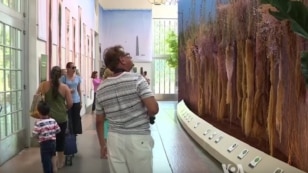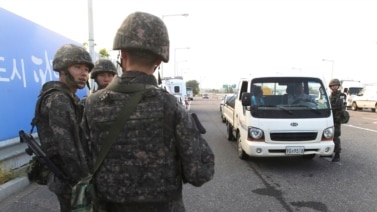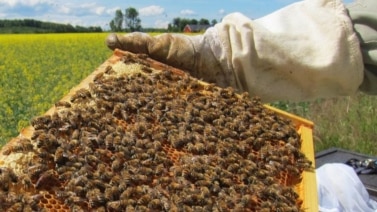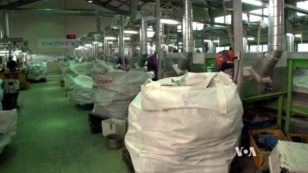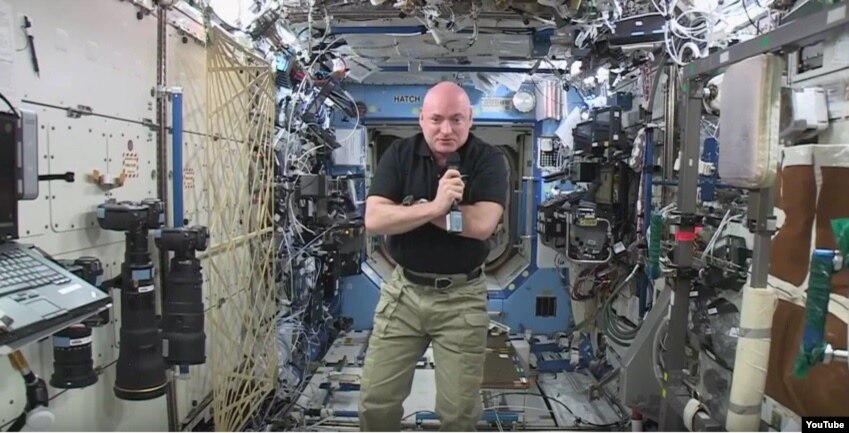
Right now, as you go about your business, two humans are passing above you in outer space.
American astronaut Scott Kelly and Russian cosmonaut Mikhail Kornienko reached the halfway point of a year-long mission on the International Space Station (ISS) this week.
The two astronauts will spend 342 days in space. Tuesday they passed the 171-day mark. Most visits to the Space Station last four to six months.
This mission will help scientists understand how the human body reacts to long periods of spaceflight.
In a recent interview, Scott Kelly said, “It’s a big milestone, but I’m not going to start counting days down yet. I’m going to wait until March, then I’m going to allow myself to count how many days I have remaining. I’m counting up for the time being.”
To mark the occasion, Kelly took time out to talk with two cast members from the upcoming movie, “The Martian.” He also received “Happy Half Day” greetings from his girlfriend.
In their six months in orbit, the astronauts have participated in a range of scientific experiments. The experiments focus on seven areas of investigation.
- Body function
- Behavior and mental health
- Eyesight
- Metabolic process - the chemical process of how the body uses food or water to make energy
- Physical performance
- Microbial – the collection of microbes or small living things that live in and on the human body at any given time
- Human factors - assessing how astronauts interact with the space station environment
One important experiment has watched how body fluids shift into the upper body during weightlessness. This shift may cause changes in vision through increased intracranial pressure. It is a major issue scientists want to resolve before sending humans to explore beyond Earth’s orbit.
Astronaut Kelly presents NASA with a unique study situation.
Scott Kelly’s identical twin brother -- former astronaut Mark Kelly – is being measured and analyzed on Earth at the same time. Researchers want to compare medical information of the two brothers who share similar genetics because they are twins. They also will look at the differences in how the two men’s bodies differ after a year of weightless for one while the other remained on the ground.
All research gathered from both the American and Russian crew members during the ISS mission is shared between the countries. This is an important step in reducing cost and improving efficiency for future space station research.
The one-year crew mission is the latest step in the International Space Station’s role to help prepare humanity for possible exploration into deeper space.
The two astronauts will return home March 2016.
I’m Jonathan Evans.
AP reported this story. Marsha James adapted the story for Learning English. Kathleen Struck was the editor.
Words in This Story
milestone – n. an important point on the progress or development of something
intracranial pressure – n. the pressure inside the skull and in the brain tissue and cerebrospinal fluid
microbe – n. an extremely small living thing that can only be seen with a microscope


